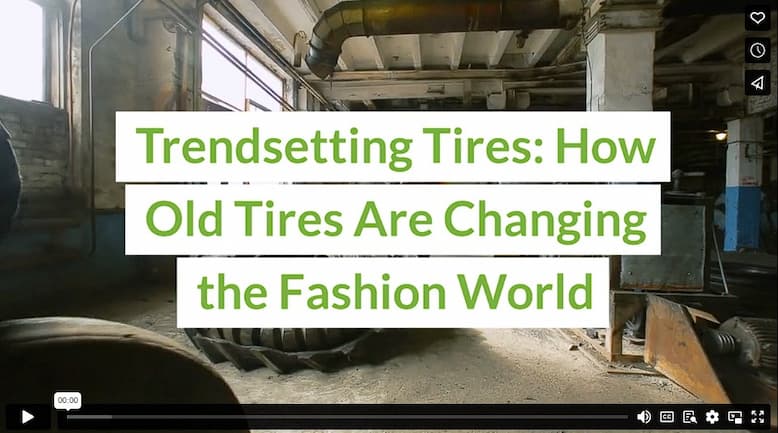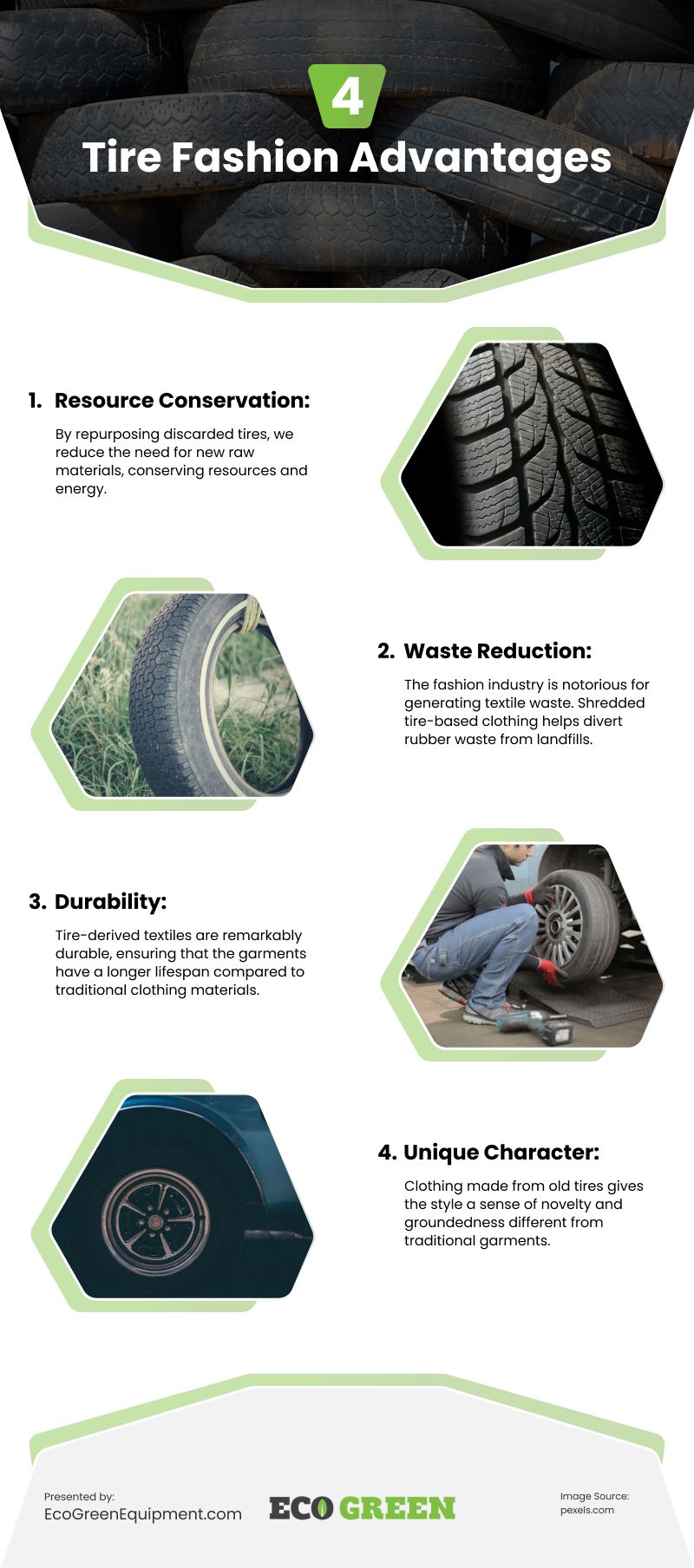Sustainable fashion has experienced a remarkable surge in popularity. Conscientious consumers, driven by environmental concerns, have begun to demand clothing that not only looks good but also does good. The industry is forecasted to more than double from an estimated 6.5 billion today to over 15 billion in 2030.
Innovative materials and fashion production methods are shifting to meet the demand for sustainable clothing. One such pioneering development is the use of shredded tires as a source of fashionable and sustainable clothing. Let’s explore the journey of sustainable fashion and delve into the specifics of how shredded tires are being transformed into stylish and eco-conscious garments.
What’s driving the sustainable fashion trend?
The environmental impact of the fashion industry has been under scrutiny for years, as many of its practices can be harmful, including:
- Cotton farming which requires heavy watering.
- Fabric dyeing which uses polluting chemicals.
- Disposal of “fast-fashion,” which contributes to the growing waste in landfills.
The impact has been considerable. However, in the last decade, a shift towards sustainable fashion has gained momentum. Here are some key factors contributing to this evolution:
- Consumer Awareness: People are becoming educated about the environmental and ethical issues associated with the fashion industry.
- Transparency: Brands are increasingly adopting transparency in their supply chains, allowing consumers to make informed choices about their purchases.
- Eco-friendly Materials: Innovations in sustainable materials, such as organic cotton, hemp, bamboo, and recycled textiles, bring a sense of novelty and well-being.
- Circular Fashion: The concept of a circular economy in fashion, where clothes are designed to be recycled or repurposed.
It is in this context that the idea of transforming discarded tires into clothing has emerged. It sounds ludicrous at first. Tires are rough, dirty, and heavy, all the things clothing tries not to be. But it’s working.
Turning Tires into Textiles
Shredded tires might seem like an unconventional choice for clothing material, but their carbon-based properties make them an unlikely candidate for sustainable fashion. Here’s how it works:
- Tire Shredding: The process begins by shredding old tires into fine particles. Tire shredder machines create powder rubber, a resource for many secondary recycling products like asphalt and textiles.
- Pyrolysis: Oil is extracted from shredded tires through a method called pyrolysis. Pyrolysis is the superheating of rubber in the absence of oxygen.
- Polymerization: Using the oil, polyamide is made using heat and chemicals. This plastic material is similar to polyester and can be spun into yarn.
- Dyeing and Printing: Sustainable dyes and printing methods are used to add color and patterns to the fabric, minimizing the environmental impact.
While it sounds complicated, making clothing from tires isn’t so different from how synthetic fabrics are produced today. The upside is that the base material is old tires instead of valuable and environmentally taxing oil.
Benefits of Tire-Derived Fashion
Using shredded tires to create fashion items offers a range of benefits, aligning with the core principles of sustainable fashion. Some of these we’ve already alluded to, others might surprise you:
- Resource Conservation: By repurposing discarded tires, we reduce the need for new raw materials, conserving resources and energy.
- Waste Reduction: The fashion industry is notorious for generating textile waste. Shredded tire-based clothing helps divert rubber waste from landfills.
- Durability: Tire-derived textiles are remarkably durable, ensuring that the garments have a longer lifespan compared to traditional clothing materials.
- Unique Character: Clothing made from old tires gives the style a sense of novelty and groundedness different from traditional garments.
Specific Applications
So what kind of clothing are we talking about? Tire-derived fashion is not limited to a single garment. It has the potential to span a wide array of designs and styles. Some specific applications include:
Accessories: Belts, bags, and wallets made from tire-derived material add a unique touch to your accessory collection while making a positive impact on the environment.
Athletic Wear: The durability and flexibility of this material make it a great choice for athletic clothing, such as yoga pants and sportswear.
Casual Wear: From jeans to t-shirts, tire-derived fabric can be integrated into everyday clothing items, combining style with down-to-earth sustainability.
Designer Collections: Even high-end designers have begun to incorporate tire-derived textiles into their collections, demonstrating that eco-conscious fashion can be both luxurious and responsible.
Footwear: Shredded tire material can be used to make soles, and polymerized oil from tires can be used to make shoe fabric. Tires are like the shoes of cars, after all. Eco-friendly sneakers and sandals made from recycled tires might be the new fad.
Challenges and Future Outlook
While brilliant at face value, there are some hurdles facing the tire-fashion industry. These include addressing the perception of recycled materials and scaling up production while maintaining quality standards and decreasing emissions during the processing process.
Overall, however, the future looks bright for sustainable fashion. Tire-derived textiles are just one example of the innovative materials and processes revolutionizing the industry. As consumers continue to demand eco-friendly options, the fashion world is responding with creativity, dedication, and, as always, style.
Video
Infographic
Fashion industry is moving towards sustainable clothing. One innovative development is using shredded tires to create fashionable and sustainable clothing. It offers various benefits, aligning with sustainable fashion principles. Learn more in the infographic below.






